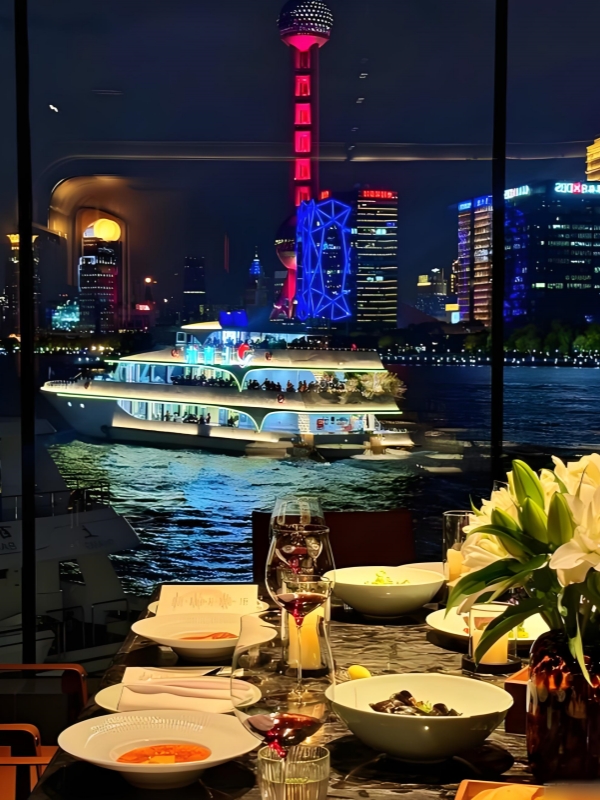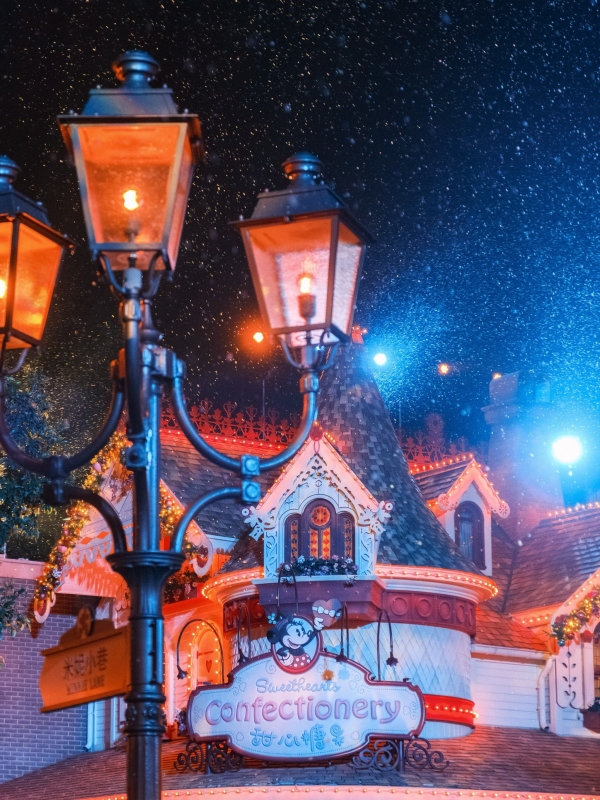I didn’t plan on shopping in Shanghai—at least, not with any real intention. But if someone asks what to buy in Shanghai, the answer jumps out the moment you see the mix of price and quality here. Real mulberry silk scarves at half the price you’d pay in Europe, pearls that are strung in front of you, tea leaves that smell like the start of spring—these aren’t the kind of things you pick up back home without overpaying. And they’re not tacky souvenirs; they’re pieces that actually feel connected to the city.
This guide isn’t just another "top things" list. It’s about 10 souvenirs that, I think, are worth stuffing in your luggage—even if you need to ditch that extra pair of sneakers. I’ll share what caught my attention, why some pieces felt “oh, I need this,” and where to buy them without falling for overpriced traps. If you want something that still feels like Shanghai when you unpack at home, you’ll find some ideas here.
1. Chinese Silk – From Scarves to Quilts
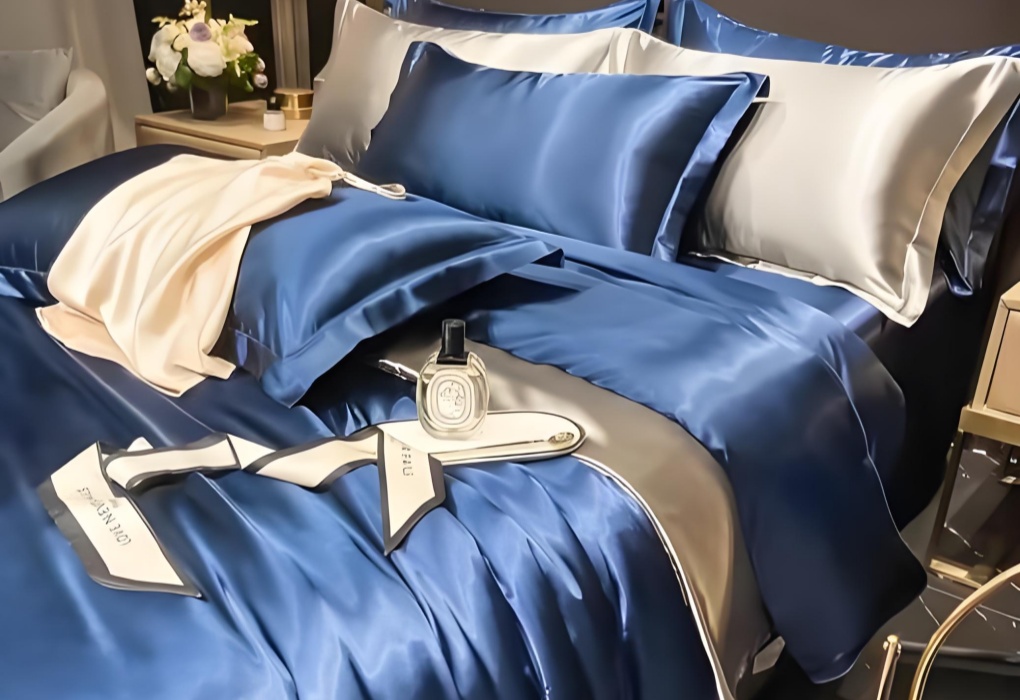
Chinese Silk
I remember stumbling into a silk shop on South Shaanxi Road—kind of by accident, actually. The sign outside said “100% Silk - 桑蚕丝” in big, slightly crooked English letters. The lady running the place handed me a scarf and said, “Try feel.” I wasn’t expecting much, but it slid through my fingers like water. TripAdvisor reviewers also mention this area as having fewer tourist traps than Nanjing Road, which matches what I saw. I ended up taking home a navy silk quilt, packed in one of those zip-up fabric bags. I think I paid around ¥700-800 (roughly $95-110 USD). Three years later, it still looks like new.
Scarves are the safe entry point if you’re not sure. I saw prices ranging from about ¥80-100 for printed versions to maybe ¥200 for hand-dyed pieces. If you see something like “Silk Blend” or “真丝混纺” on the tag, it’s not pure mulberry silk. A vendor told me to rub the fabric lightly; real silk stays cool on your skin. For bigger items like quilts, I saw price tags on Ctrip screenshots showing ¥600-900, depending on thickness.
- Estimated Prices: Scarves around ¥80-200, silk quilts about ¥600-900
- Where to Shop: Yu Garden silk stores, small shops near South Shaanxi Road, Sogo Department Store
- Best For: Anyone who values both comfort and style
- Tips: Double-check labels for “100% mulberry silk” (桑蚕丝). If you can, ask for a burn test demo—some shops will show you a silk thread turning to ash, not plastic.
Curious where to shop without feeling rushed? Explore Cloud Nine Shanghai Shopping & Dining Guide: My Top Recommendations
2. Qipao (Cheongsam) – The Most Stylish Shanghai Souvenir
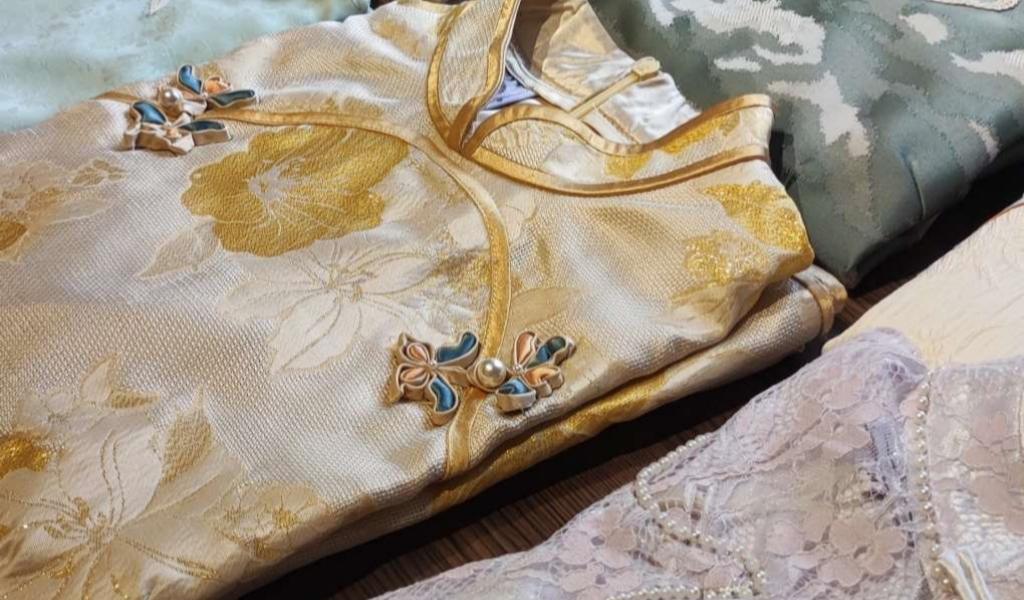
Qipao
If I had to pick one thing that screams “Shanghai,” it’s the qipao. But it’s not just about looks; it’s about fit and confidence. I once walked past a boutique on Changle Road (长乐路) where a tailor was measuring a foreign tourist. She laughed nervously as he muttered “Shanghai style” in broken English. Three days later, I saw her picking up the finished dress—slim cut, silk fabric, subtle embroidery—and it looked like it was made for her, because it was.
Ready-to-wear pieces at Yuyuan Bazaar are cheaper, I think I saw some tagged around ¥300-500. Tailored ones can climb to ¥1,200 or even ¥1,500 if you go for heavy embroidery or custom fits. According to a comment on TripAdvisor, one traveler paid about ¥1,000 for a made-to-measure dress and called it “the best thing I bought in China.” If you want a custom qipao, plan at least 2-3 days for fittings. Otherwise, malls on Huaihai Middle Road (淮海中路) have good off-the-rack options.
- Estimated Prices: Ready-made ¥300-800, custom silk qipao ¥1,000-1,500
- Where to Buy: Tailor shops on Changle Road, ready-to-wear stalls in Yuyuan Bazaar, malls on Huaihai Road
- Best For: Fashion lovers, gift buyers, or anyone curious about Chinese aesthetics
- Tips: Bring a reference photo. Tailors appreciate it, and it avoids misunderstandings with pattern or slit height.
Tired of overpriced souvenirs and fake markets? Check Exploring 3 Outlets Shanghai: A Shopper’s Hidden Adventure
3. Jade Jewelry – Luck and Elegance in One Piece
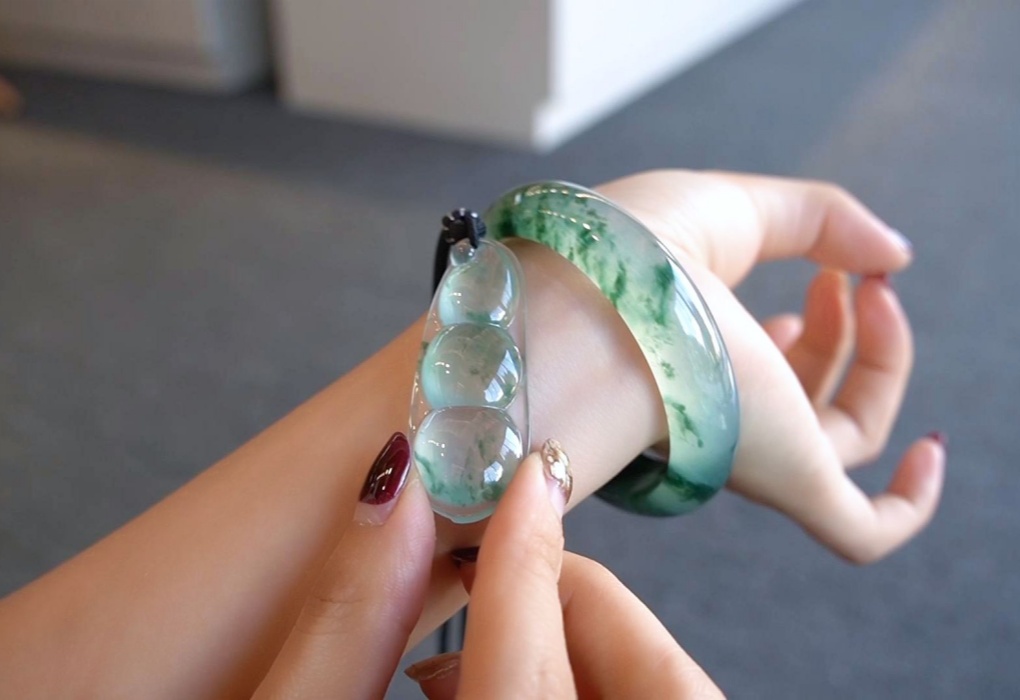
Jade Jewelry
Sometimes you notice it before you even think about buying it—slender green bangles tapping gently on wrists in metro stations, temples, or even on that Meituan rider weaving through traffic. Here, jade isn’t just something shiny; it’s a cultural relic turned everyday talisman. Locals say it protects, balances, even tells a story about the person who wears it. And in Shanghai, where you’ll see luxury boutiques next to tiny antique stalls, jade feels like something timeless you can slip into your pocket.
I remember asking a vendor in Hongqiao Pearl Market to show me a few “fei cui” (jadeite) pieces. He turned the light on and said, “Natural, no dye.” Maybe he was right, maybe not—but I walked away with a pale green bracelet for around ¥180-220, and I’ve worn it on and off since. TripAdvisor reviews also warn about fakes, so it’s worth checking color under strong light or even asking for a scratch test. Most casual shoppers stick with bead bracelets, which start near ¥150. If you’re eyeing higher-end pieces, you’re easily looking at ¥500–1,500, and that’s still mid-range.
- Estimated Prices: Bead bracelets or pendants ¥150–400, mid-range jadeite pieces ¥500–1,500+
- Where to Buy: Hongqiao Pearl Market (jade counters), Raffles City curated shops, small counters at Jiuguang Department Store
- Best For: Travelers curious about cultural symbols or meaningful gifts
- Tips: Real jade is cooler and heavier than glass—ask about treatment or origin if you’re unsure.
4. Chopsticks – A Pair of Everyday Art
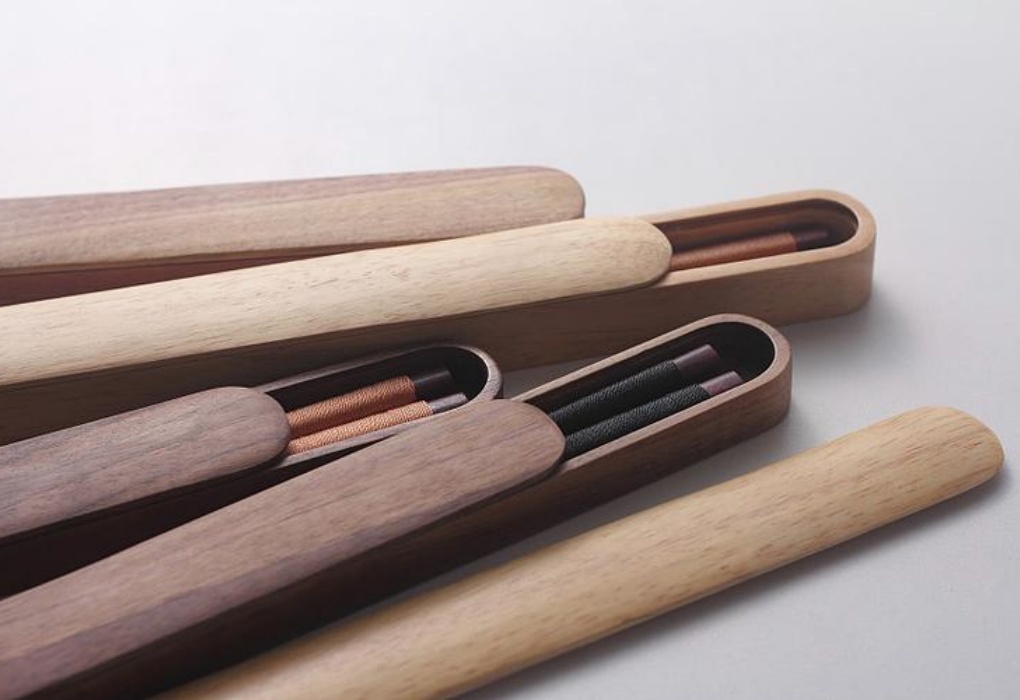
Chopsticks
You see them everywhere—wedged between tea tins, folded paper fans, or “Shanghai” fridge magnets. But here’s the thing: a good pair of chopsticks is both practical and personal. They’re slim, light, and something you’ll actually use. Once you’ve wrestled with flimsy disposable ones, you’ll appreciate the smooth feel of a decent wooden pair.
Not all chopsticks are made equal. Some lacquered sets are meant for display; they look good in a gift box but are slippery during dinner. I think I paid around ¥35-40 for a pair of elm-wood chopsticks from a small stall near Tianzifang—they came in simple paper sleeves, no frills. They’ve been my kitchen favorites ever since. Friends have told me the same: skip shiny gold dragons or bulky handles, and focus on natural woods like elm or rosewood.
- Estimated Prices: Functional wood sets ¥30–60, handcrafted or decorative pairs ¥100–150
- Where to Buy: Tianzifang stalls, craft shops on Julu Road, or the homeware section of Muji
- Best For: People who enjoy cooking or want a souvenir that’s both useful and thoughtful
- Tips: Wood > metal or plastic. If it feels natural in your hand, you’ll likely use it again.
5. Tea Sets & Local Teas – Savor the Taste of China

Local Teas
Let’s be honest—few of us have room for an elaborate gongfu tea set at home. That’s why small, travel-friendly sets or single-cup brewers make sense when shopping in Shanghai. I found one near Huaihai Road—a clear glass cup with a bamboo lid and built-in strainer. I think I paid around ¥90-100, and it’s still on my office desk today.
When it comes to tea, packaging matters. Avoid random vacuum-sealed bags at tourist stalls unless you can read the sourcing details. Stores like Tianshan Tea City or City’super have labeled tins and even brewing instructions in English. If you’re new to Chinese teas, dragon well, jasmine pearls, or mini pu’er cakes are safe picks. A 50g tin of premium green tea often costs around ¥80-200, depending on grade.
- Estimated Prices: Compact tea set ¥80–150, 50g premium tea tins ¥80–200
- Where to Buy: Tianshan Tea City, Ole’/City’super, selected stores in Yuyuan Market
- Best For: Tea lovers or minimalists who value taste over bulk
- Tips: Stick to small tins with labels. A proper seal and English brewing notes save guesswork.
6. Chinese Paintings & Paper Art – Flat, Fragile, but Full of Soul
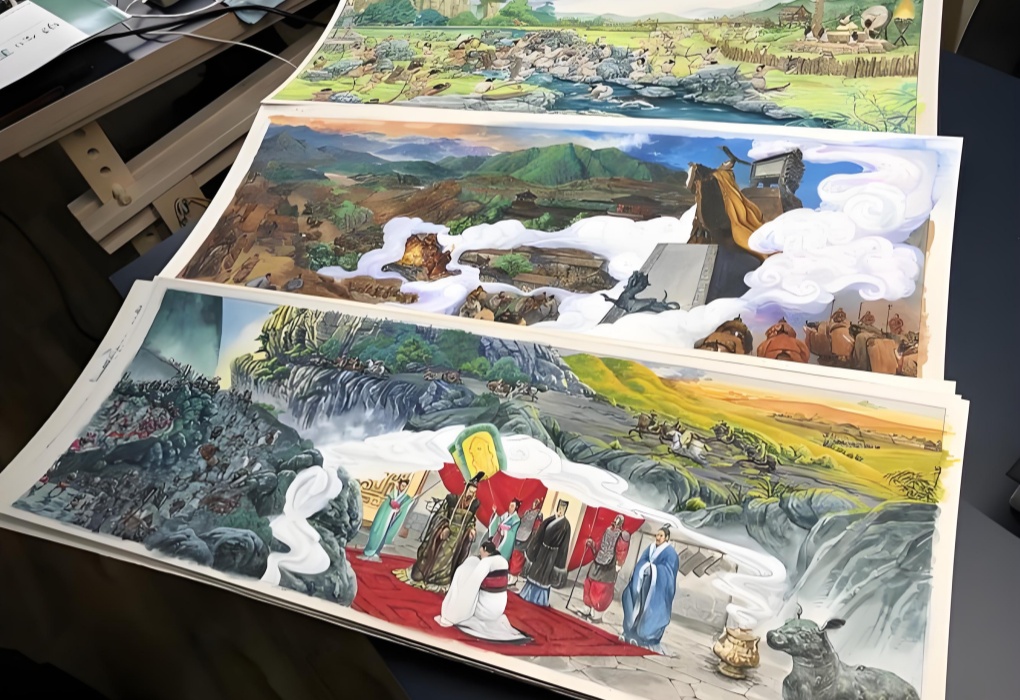
Chinese Paintings
When your suitcase is almost bursting but you still want something that feels like Shanghai, paper art is an easy win. Scroll paintings, delicate calligraphy, or those intricate paper-cutting designs all fold flat and weigh almost nothing. Once framed, they can turn a simple corner of your home into something that looks like a mini gallery.
I’ve seen plenty of mass-produced prints on Nanjing Road—nice from afar, but they’re just printed cloth with no soul. The better finds are tucked inside tiny studios near Yu Garden or in Tianzifang’s quiet alleys. Some artists even paint while chatting with visitors; I once picked up an ink painting of cranes for around ¥120–150, wrapped in a protective tube. The painter wrote a short note about the symbolism of the birds—it made me value it even more.
If you like folk touches, look for paper-cutting sets (especially red patterns for windows). Ask if they’re hand-cut; the small imperfections are what make them charming. A machine-cut piece looks too perfect, like it came off an assembly line.
- Estimated Prices: Hand-painted scrolls ¥100–250, framed paper-cuts ¥60–120
- Where to Buy: Yu Garden art lanes, artist stalls in Tianzifang, design bookstores like The Mix-Place
- Best For: Travelers who want something meaningful but light to pack
- Tips: Request an artist’s stamp or signature—those little marks add both story and value.
7. Pearls – Affordable Luxury from Local Markets
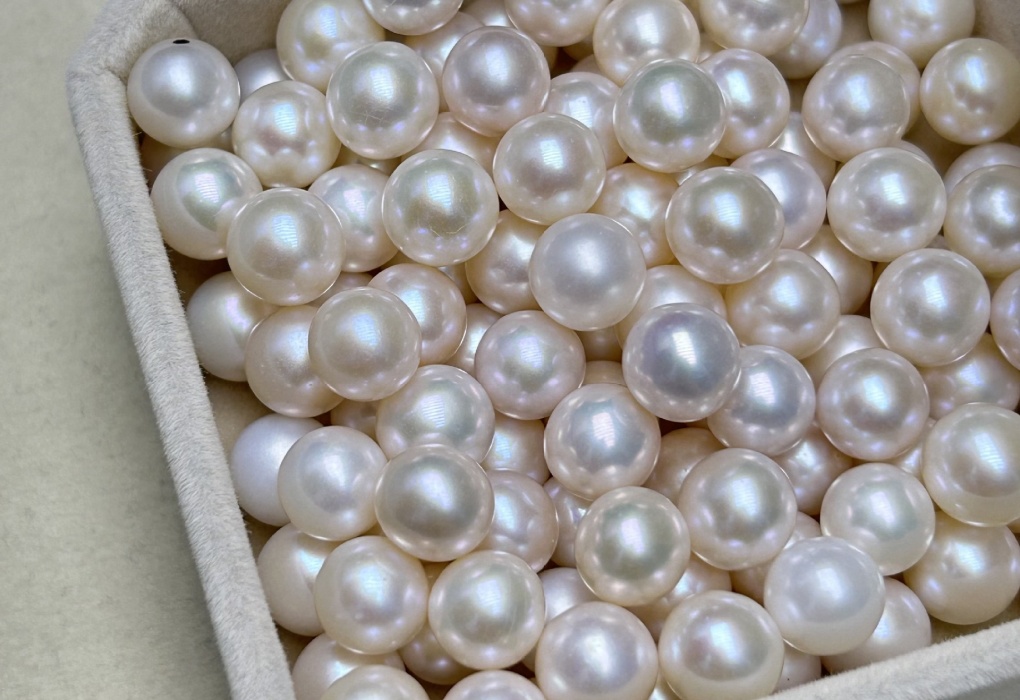
Pearls
Pearls in Shanghai don’t require a luxury budget—just a bit of patience and curiosity. Forget the glass displays in high-end stores; the real fun is at places like Hongqiao Pearl Market, where you can hold the strands, compare shapes, and even ask the vendor to string a necklace on the spot.
Most pearls here are freshwater types. They’re less expensive than saltwater Akoya pearls but just as pretty in soft pinks, creamy whites, or champagne hues. I remember helping a friend pick out a single-pearl pendant for around ¥250–300; the seller laid out half a dozen loose pearls under a light so she could choose her favorite. That personal touch is what makes the experience stand out.
Earrings start as low as ¥80–120, while full necklaces can go beyond ¥1,000 if you want larger, more uniform pearls. Don’t be shy about asking questions like “Natural color?” or “Is it treated?”—a decent seller will hand you a flashlight and explain the differences.
- Estimated Prices: Studs ¥80–150, pendants ¥200–400, necklaces ¥300–1,000+
- Where to Buy: Hongqiao Pearl Market (2nd & 3rd floors), boutique counters in Metro City, some curated stalls in Yuyuan
- Best For: Travelers looking for small yet classy gifts
- Tips: Real pearls have tiny surface marks. Perfectly round, flawless ones are often processed.
Want tips on bargaining and finding quality pearls? See Pearl Market Shanghai: 2025 Guide to Pearls, Bargains, and Culture
8. Local Snacks – Sweet, Savory, and Full of Nostalgia
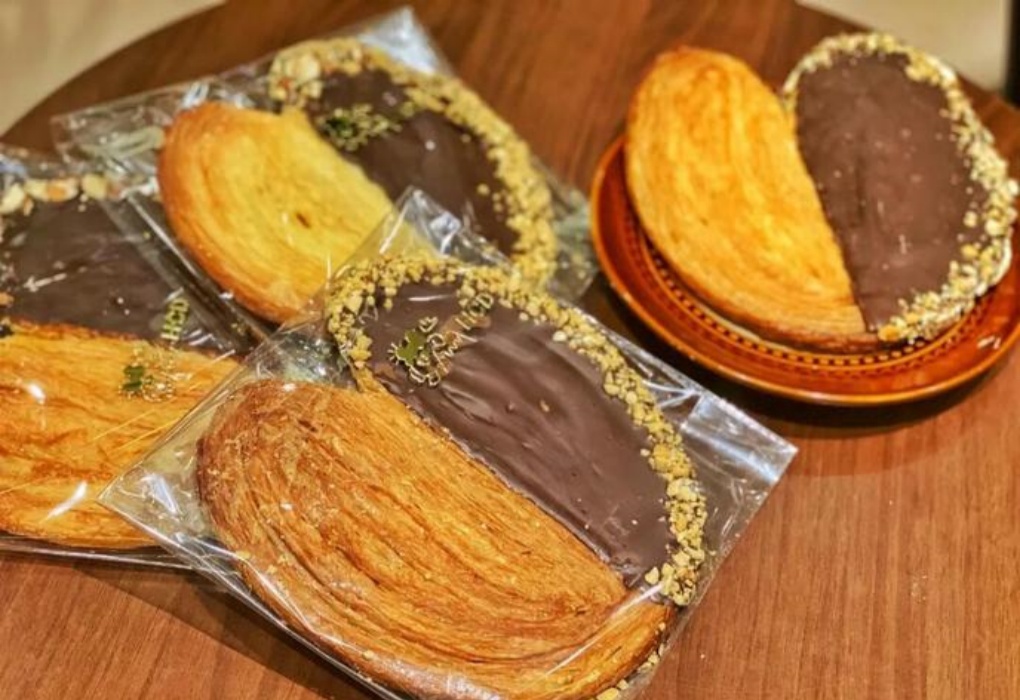
Local Snacks
This is where shopping gets fun—snacks as souvenirs. Some are hits, some are misses, but there are a few safe bets. White Rabbit creamy candy is a classic: sweet, milky, chewy, with a thin rice-paper layer that still puzzles first-timers. You’ll find them in every supermarket and even special gift tins at the airport.
Butterfly cookies are another favorite—a buttery, flaky pastry shaped like wings. They last weeks if you keep them sealed, and I’ve yet to meet someone who didn’t like them. If you’re adventurous, you’ll see packs of dried tofu, spiced plums, or even vacuum-sealed meat floss rolls. I once bought a bag of fish skin chips for a friend—let’s just say they didn’t finish it.
For safety, buy well-labeled snacks with a clear shelf life. City’super, Ole’, and even Lianhua supermarkets carry tidy boxes priced around ¥30–60. Premium gift sets go up to ¥150 but make great office treats.
- Estimated Prices: Candy boxes ¥30–60, gift sets ¥80–150
- Where to Buy: City’super, Ole’, Lianhua, snack counters in Metro City or Global Harbor
- Best For: Foodies or anyone who wants something to share back home
- Tips: Skip anything needing refrigeration unless you’re sure about your flight timing.
9. Handheld Folding Fans – A Moving Piece of Art
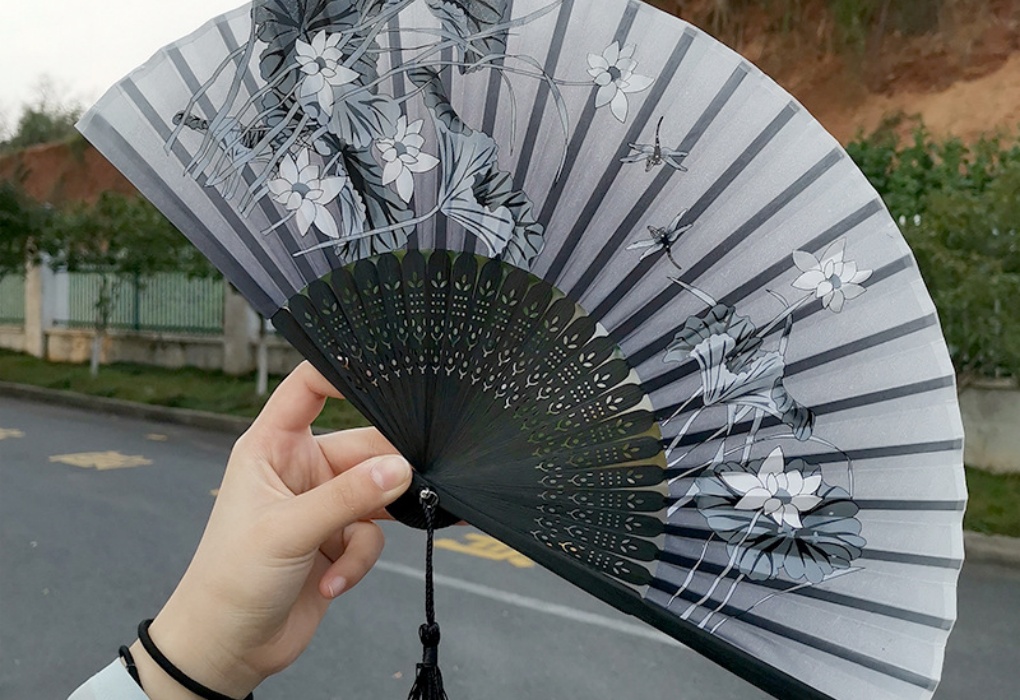
Handheld Folding Fans
On a hot Shanghai afternoon, a folding fan feels like a blessing. I’ve carried one while wandering Yu Garden in 35°C heat, and it made all the difference. Fans are flat, light, and surprisingly sturdy when you choose the right type.
The good ones are made with bamboo ribs and painted cotton or paper, often decorated with simple ink landscapes or calligraphy. I bought a hand-painted fan with plum blossoms for about ¥90 in Tianzifang; the seller even wrote my name in brush characters on the side. It’s been on my desk since.
Avoid plastic fans with noisy hinges or overly touristy prints. A balanced fan opens and closes smoothly, like something you’ll actually keep using.
- Estimated Prices: Hand-painted fans ¥50–100, silk or custom styles ¥120–250
- Where to Buy: Tianzifang craft shops, Yuyuan fan stalls, Shanghai Old Street heritage corners
- Best For: Travelers with tight luggage space
- Tips: Test it before you buy. If it creaks or smells like glue, skip it.
10. Chinese Seals – Your Name in Ancient Characters
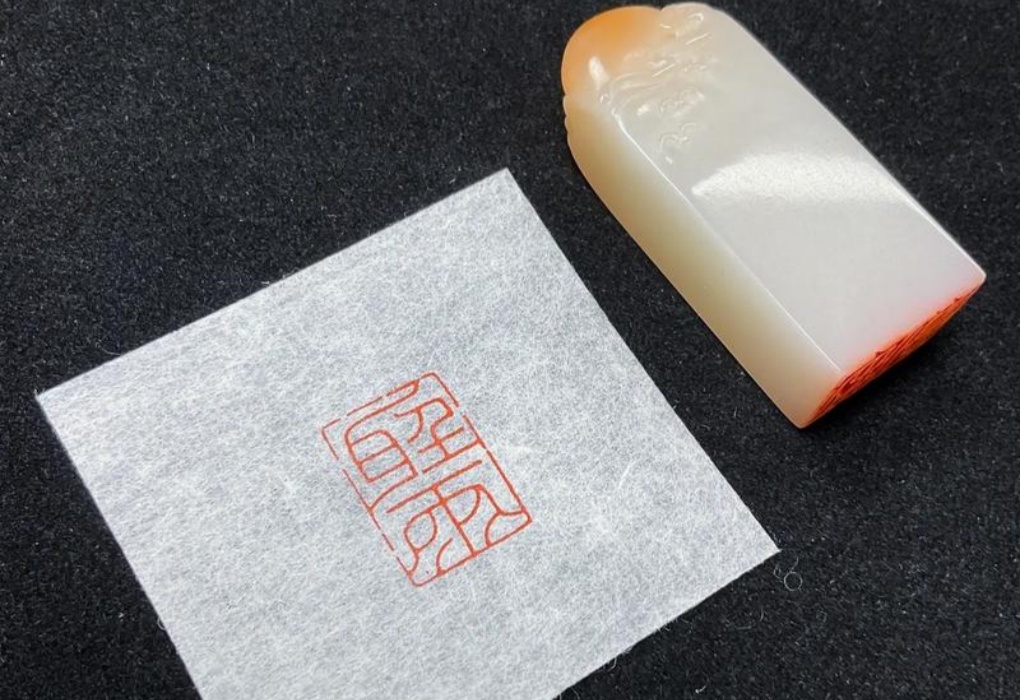
Chinese Seals
There’s something special about having your name carved into stone. In old times, seals were the “signatures” for letters and artwork. Now they make personal souvenirs that carry a lot of character.
I once had mine carved near the City God Temple. For around ¥120, I picked a piece of soapstone, the carver chose characters that matched my name’s sound, and within 20 minutes I had a custom stamp. He even let me test it with red ink on rice paper.
Seals are small, lightweight, and come in tiny boxes. Some shops offer a set with ink paste and a fabric pouch, which makes for a ready-to-give gift. Ask about the translation of your name—sometimes they pick characters with lucky meanings like “peace” or “fortune.”
- Estimated Prices: Soapstone seal ¥80–150, custom carving sets ¥150–250
- Where to Buy: City God Temple shops, Yuyuan Bazaar calligraphy corners, stalls near the Bund
- Best For: Travelers who want personalized souvenirs
- Tips: Check the sample characters before carving. Softer stones are easier to carry.
If you feel that these ten items aren’t enough, you can check out this article which offers even more ideas and unique finds on Your Trip in China.
Where to Shop in Shanghai for the Best Souvenirs?
After going through all these ideas about what to buy in Shanghai, the next question is simple: where do you actually go without wasting hours in the wrong spots or paying tourist prices? Here are three reliable places where the experience of shopping feels as interesting as the souvenirs themselves.
Yuyuan Bazaar – Tradition, Bargains, and Atmosphere
Yuyuan Bazaar is busy, a little chaotic, but that’s the charm. Located next to Yu Garden, it’s packed with silk scarves, folding fans, tea sets, and hand-carved seals. This place is one of the best answers to what to buy in Shanghai when you want classic items with a sense of history.
You can bargain here without feeling awkward. I once negotiated a painted fan from 85 RMB to 55 RMB just by chatting with the vendor. The alleys are tight, the noise level high, but the variety is unbeatable. It’s a great starting point for anyone wondering what to buy in Shanghai that blends tradition and good value. Arrive early, bring cash or Alipay, and take your time.
Hongqiao Pearl Market – Pearls, Jade, and Handicrafts Under One Roof
From the outside, Hongqiao Pearl Market looks ordinary, almost like an office block. But step inside and head to the second or third floor, and you’ll see rows of pearl counters, jade pendants, and small craft stalls. This is often my go-to suggestion when people ask what to buy in Shanghai that feels personal and elegant.
Vendors here are used to tourists and don’t mind if you take time to compare. I once watched a couple spend half an hour picking pearls for custom bracelets, and the vendor carefully adjusted each piece. For shoppers wondering what to buy in Shanghai beyond standard souvenirs, this place offers a slower, more curated experience.
Nanjing Road – Mainstream Shopping with a Local Twist
If you prefer clean malls, air conditioning, and predictable prices, Nanjing Road is the answer. It’s home to big names like Raffles City and New World Department Store, but the smaller side shops hold plenty of charm. Think of it as the polished option for what to buy in Shanghai when time is short.
You won’t haggle here, but you’ll find well-packaged teas, branded chopsticks, candy tins, and even modern fan reproductions. It’s convenient for ticking off the last items on your what to buy in Shanghai list before heading home.
Frequently Asked Questions (FAQs)
Q: Is it worth buying silk in Shanghai instead of Suzhou?
A: Yes, especially if time is limited. Shanghai’s shops offer real silk scarves and quilts without the need for a train ride. For those asking what to buy in Shanghai that combines quality and convenience, silk is always near the top.
Q: Where can I find authentic jade in Shanghai?
A: Stick to trusted places like Hongqiao Pearl Market. Real jade feels cool and heavier than glass. It’s one of the most traditional choices for what to buy in Shanghai if you value culture and design.
Q: Are silk quilts too bulky for travel?
A: Most shops vacuum-pack them, making them easy to carry. If you’re considering what to buy in Shanghai that’s practical and elegant, a silk quilt is worth it.
Q: How much should I budget for souvenirs in Shanghai?
A: Around 500–1,000 RMB is a safe range for snacks, fans, and mid-range items. For those deciding what to buy in Shanghai without overspending, this budget is more than enough.
Q: Are pearls from Shanghai real?
A: Yes, most are freshwater pearls. Look for slight imperfections and natural luster. Pearls are a timeless pick on any what to buy in Shanghai list.
Q: Are shops on Nanjing Road worth visiting?
A: They are tourist-friendly but still good for quality items. If you’re not sure what to buy in Shanghai at the last minute, Nanjing Road offers a safe mix of options.
Q: Do tourist areas overcharge compared to local markets?
A: Sometimes, but you pay for convenience. If you want to explore what to buy in Shanghai at local prices, Yuyuan or smaller markets give more room for bargaining.
Want more China travel ideas? Check out our city guides on Beijing, Shanghai, Guangzhou, and Chengdu.
